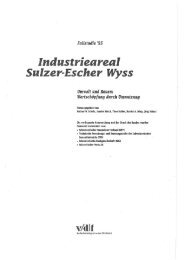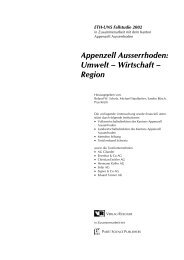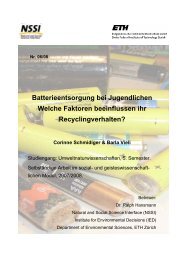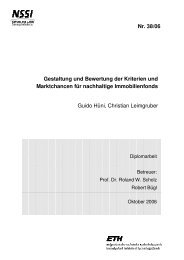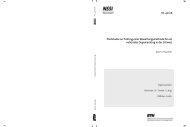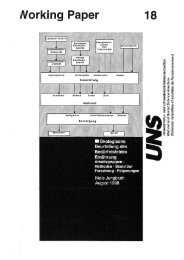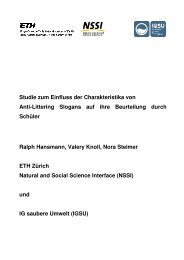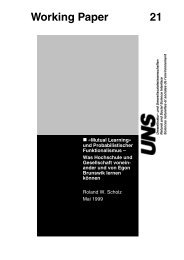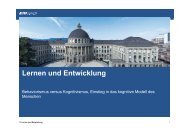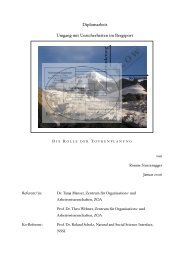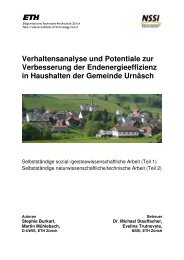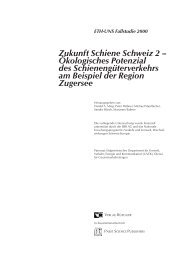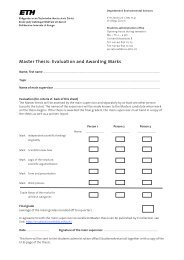Non-road fuel consumption and pollutant emissions ... - BAFU - CH
Non-road fuel consumption and pollutant emissions ... - BAFU - CH
Non-road fuel consumption and pollutant emissions ... - BAFU - CH
Create successful ePaper yourself
Turn your PDF publications into a flip-book with our unique Google optimized e-Paper software.
<strong>Non</strong>-<strong>road</strong> <strong>fuel</strong> <strong>consumption</strong> <strong>and</strong> <strong>pollutant</strong> <strong>emissions</strong> FOEN 2008 36<br />
The level of an engine’s <strong>fuel</strong> <strong>consumption</strong> <strong>and</strong> <strong>pollutant</strong> <strong>emissions</strong> depends on its age,<br />
<strong>and</strong> in the <strong>emissions</strong> model this is taken into account using a deterioration (wear <strong>and</strong><br />
tear) factor. Different assumptions relating to wear <strong>and</strong> tear are made, depending on the<br />
<strong>pollutant</strong>. The influence of wear <strong>and</strong> tear is calculated using the deterioration factors<br />
indicated in Table 9.<br />
Wear <strong>and</strong> tear (CF3)<br />
Tab. 9 > Deterioration factors<br />
Wear <strong>and</strong> tear (CF 3 ).<br />
Engine type<br />
Period of<br />
CO HC NOX PM Consumption<br />
deterioration (Ph)<br />
Max. Max. Max. Max. Max.<br />
2-stroke petrol 100 hrs 1.1 1.1 1.3 1.3 1.0 1.0 1.2 1.2<br />
4-stroke petrol 500 hrs 1.1 1.1 1.5 1.5 1.0 1.0 1.2 1.2<br />
Diesel 2000 hrs 1.1 1.2 1.15 1.3 1.0 1.0 1.1 1.2 1.0 1.0<br />
The correction factor for the wear <strong>and</strong> tear of a machine (CF 3 ) can be calculated using<br />
the deterioration factors (Tab. 9) <strong>and</strong> the number of operating hours to date. In the case<br />
of diesel engines, for example, the PM emission factor increases by 10% every 2000<br />
hours, the maximum increase is 20%, i.e. even after the number of operating hours<br />
surpasses 4000 the emission factor is only increased by 20%.<br />
Key<br />
⎛<br />
⎜<br />
⎜<br />
⎜<br />
CF ( Alter ) = Verschlechterungsfaktor⎝<br />
3<br />
Re fjahr<br />
∑<br />
n=<br />
Alter<br />
H( n )<br />
⎞<br />
⎟<br />
⎟<br />
⎟<br />
⎠<br />
P<br />
h<br />
CF 3<br />
H<br />
P h<br />
= correction factor for wear <strong>and</strong> tear (dimensionless)<br />
= annual hours of operation at a certain age of the machine (hrs p.a.)<br />
= period of deterioration (hrs)<br />
In the model, in the case of diesel engines the maximum correction factor for the wear<br />
<strong>and</strong> tear of a machine is attained after approximately 3800 hours of operation, after<br />
which it is assumed that no further deterioration occurs.



